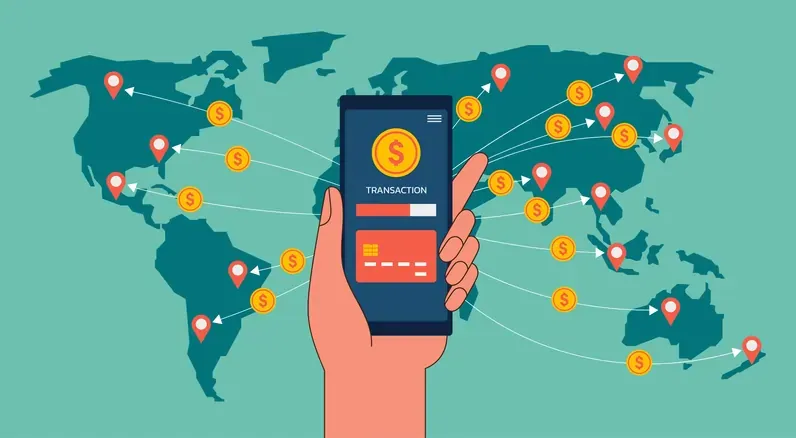
A cross-border fintech service is a digital platform that enables businesses and individuals to send, receive, and manage money across international borders more efficiently than traditional banks. These services combine technology with financial expertise to provide faster payments, transparent exchange rates, and seamless integrations with business tools.
What is a cross-border fintech solution?
Unlike legacy systems that rely on multiple intermediary banks, fintech solutions leverage innovation — from digital wallets and API-driven payments to blockchain and stablecoins — to simplify global finance.
Key challenges in global financial operations
Operating internationally creates a number of financial challenges for businesses, including:
High transaction fees – Traditional banks charge wire transfer fees plus hidden currency conversion markups.
Slow settlement – Transfers may take several days to clear, disrupting cash flow.
Limited transparency – Companies often cannot see the true cost or status of a transfer until after it’s completed.
Currency volatility – Fluctuating exchange rates make budgeting difficult.
Compliance complexity – Different jurisdictions have varying anti-money laundering (AML) and reporting rules.
These issues can be particularly burdensome for small and medium-sized enterprises (SMEs) trying to expand into new markets.
Features to look for in a solution
When choosing a cross-border fintech service, businesses should evaluate key features that make a real difference in efficiency and cost control:
Multi-currency accounts – The ability to hold, send, and receive funds in multiple currencies.
Transparent FX rates – Mid-market exchange rates without hidden markups.
Speed of settlement – Same-day or instant payments.
Regulatory compliance – Licensing by reputable financial authorities.
Integration options – APIs and accounting system compatibility for automation.
User-friendly dashboards – Clear visibility into fees, transactions, and balances.
These features ensure that businesses can operate globally without sacrificing time, money, or transparency.
The role of stablecoins and blockchain in fintech
Stablecoins and blockchain are reshaping the landscape of international payments. Stablecoins — digital currencies pegged to traditional fiat like USD or EUR — combine the efficiency of blockchain with stability in value.
Advantages for businesses include:
Instant settlement – Transfers are confirmed in minutes on blockchain networks.
Reduced fees – Blockchain transactions typically cost far less than traditional bank wires.
Global reach – Stablecoins can be sent to recipients even in regions with limited access to banking.
Transparency – Every transaction is recorded on a public ledger.
For example, a design agency in Europe paying contractors in Asia could use a stablecoin-powered platform to bypass high remittance costs and long delays.
Future trends in cross-border fintech
The future of cross-border fintech service providers will be defined by several key trends:
Greater adoption of blockchain – Mainstream businesses will increasingly use blockchain-powered rails for faster and cheaper settlements.
AI-driven compliance – Artificial intelligence will automate regulatory checks, reducing risks.
Embedded finance – More companies will integrate fintech solutions directly into their products and platforms.
Expansion into emerging markets – Fintech services will bring financial inclusion to regions with limited banking infrastructure.
Sustainability focus – As ESG priorities grow, fintech providers will innovate to reduce the environmental impact of global financial operations.
These trends highlight how technology will continue to transform international finance in the years ahead.
Conclusion
Traditional banking systems are no longer sufficient to meet the needs of globally connected businesses. By adopting a cross-border fintech service, companies can reduce costs, speed up payments, and gain greater control over international operations.
From SMEs paying overseas suppliers to enterprises managing complex payroll networks, fintech platforms offer flexibility, transparency, and innovation that legacy institutions cannot match. As stablecoins, blockchain, and AI mature, cross-border fintech will continue to redefine the way businesses move money worldwide.
For companies seeking efficiency and growth in international markets, the choice is clear: the future of global finance lies with fintech.


